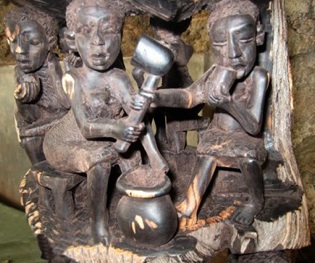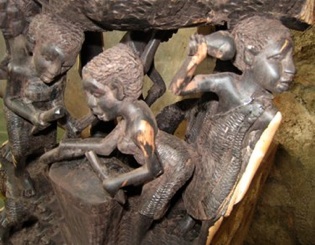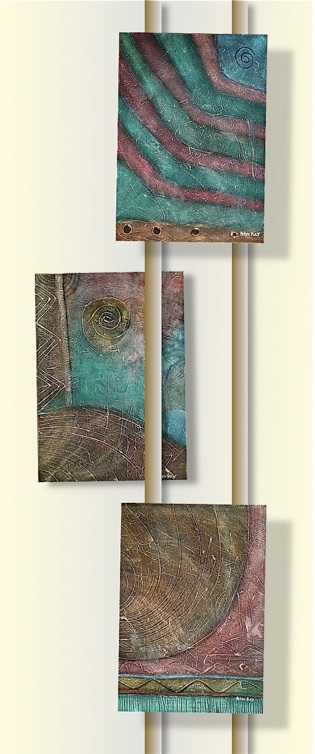The Ngoma House at Gibb’s Farm




The ngoma are made of wood covered with cow skin on both ends, although you’ll also find tourist versions of these drums covered with zebra skins. Drums are a ubiquitous feature of Africa. In many regions drums are played in groups, each having its own voice and function within the ensemble. Each of these drums are treated as individuals, thus they each have a specific sound. The largest drum makes a loud bass sound. The middle size produces a higher-pitched bass sound. The smaller size is played with sticks and produces a very high-pitched sound. In some regions of Africa a very small drumhead is used which is taller and more cylindrical than all the other drums in this set. It also has skin on only one side. All of the other drums are covered with skin on the top and bottom using an intricate lacing system. The large base ngoma has small wooden peg-like legs. All of the drums can be played with sticks, called pundusamo in Iraqw, or hands except the smallest which is primarily played with sticks.


Peter Ray’s composition Rhythm Ngoma (2) far right, echos the rhythm of the dance and ngoma drum itself (below). The textures are richly created on three canvases among two sticks representing drum sticks used by the women evoke its personal tone.
Riziki Kateya,, (1) a SANAA artists-in-residence, captures the Hybiscus, a spectacular show of beauty, a topic that may be expressed with Ngoma and song.

Village harvest activities is a popular theme of Iraqw ngoma song. Resident SANAA artist Aloyce Kilamala’s, carving Ngoma Song (3) made of Mpingo wood captures four common elements in his just completed commissioned work for the Ngoma House. The work has been installed on the fireplace wall (see photo lower right of complete work, details below).




After drinking and eating everyone is happy and they join in traditional dance with the ngoma drum. The gods and environment are thanked for the season’s bounty. In Iraqw culture the woman play the drum and the men dance.
(1) Riziki Kateya, Hybiscus, off-set lithography from water color original in the Sanaa Gallery collection. A Commissioned Sanaa work.
(2) Peter Ray’s Rhythm Ngoma installation,
an acrylic on canvas triptych with two over-sized
wood drum sticks.
(3) Aloyce Kilamala, Ngorma Song,
mpingo wood carving


New Tourism & the Harmony Project, All rights reserved.
Copyright © 2004 - 2012
African Living Spa, and Living Spa ® are registered/trademarked.

Sanaa Art Gallery Collection installed in each cottage. Select works have been commissioned to carry the theme and lesson of the house.









-
Other Gibb’s Farm web-links:


